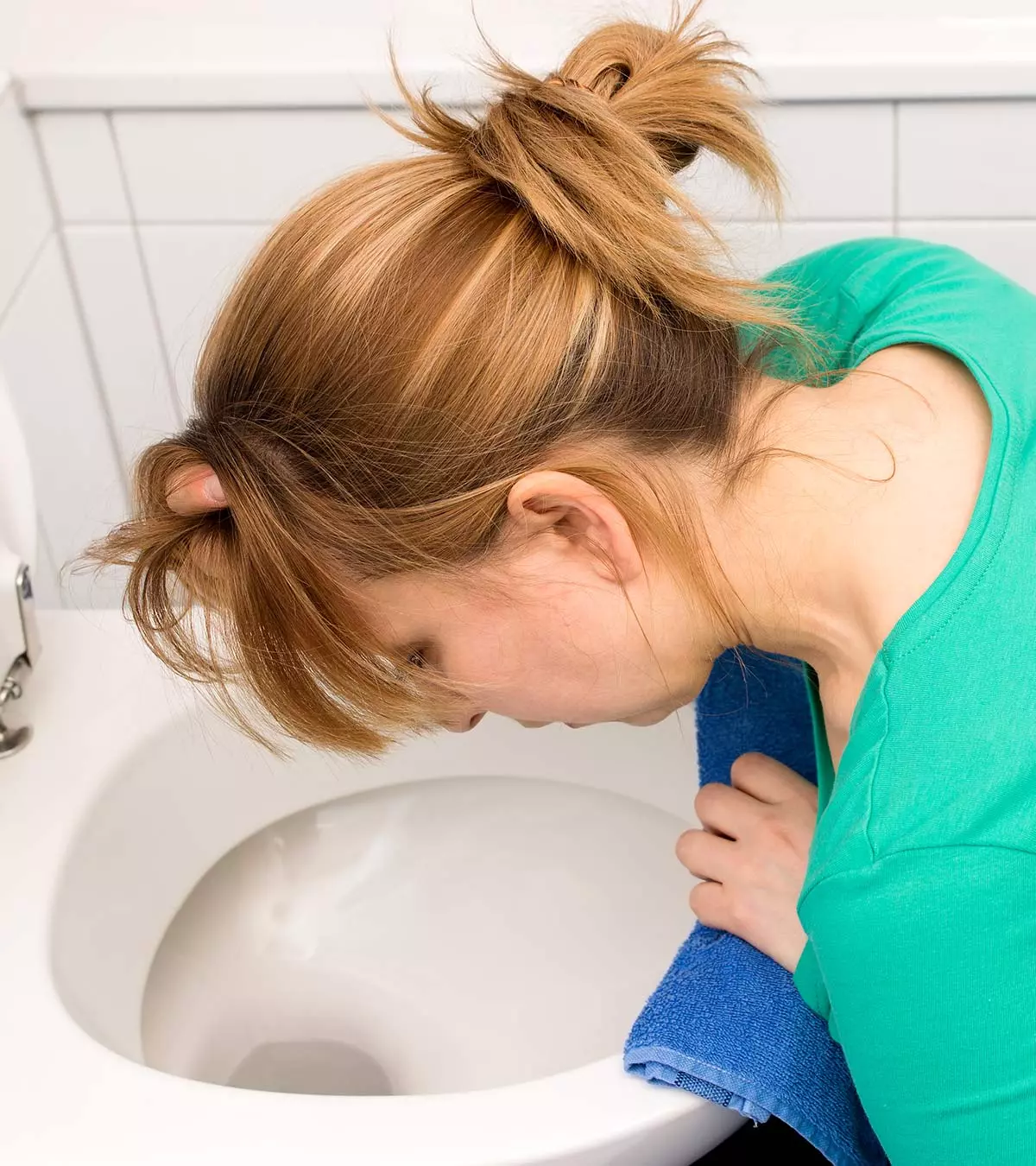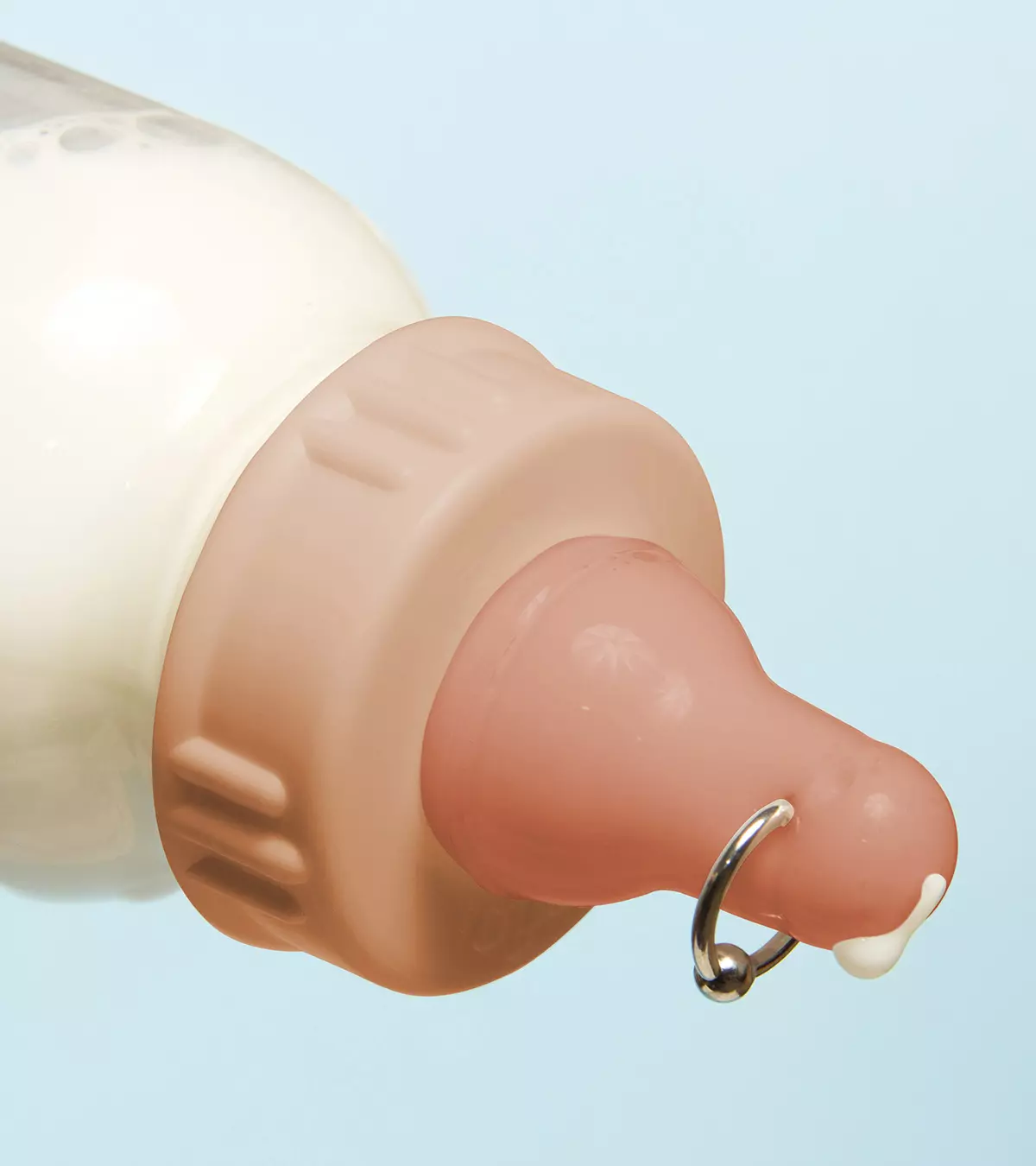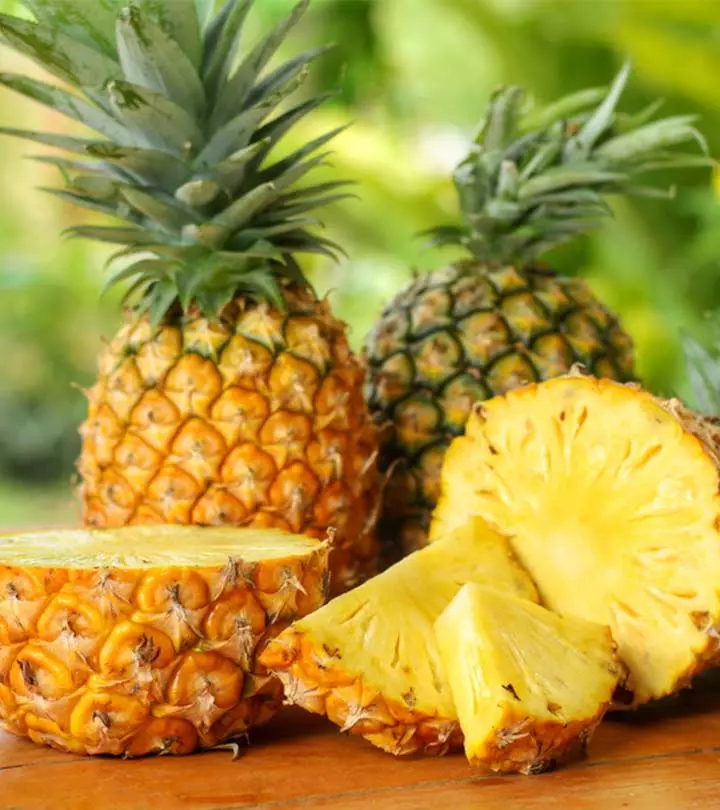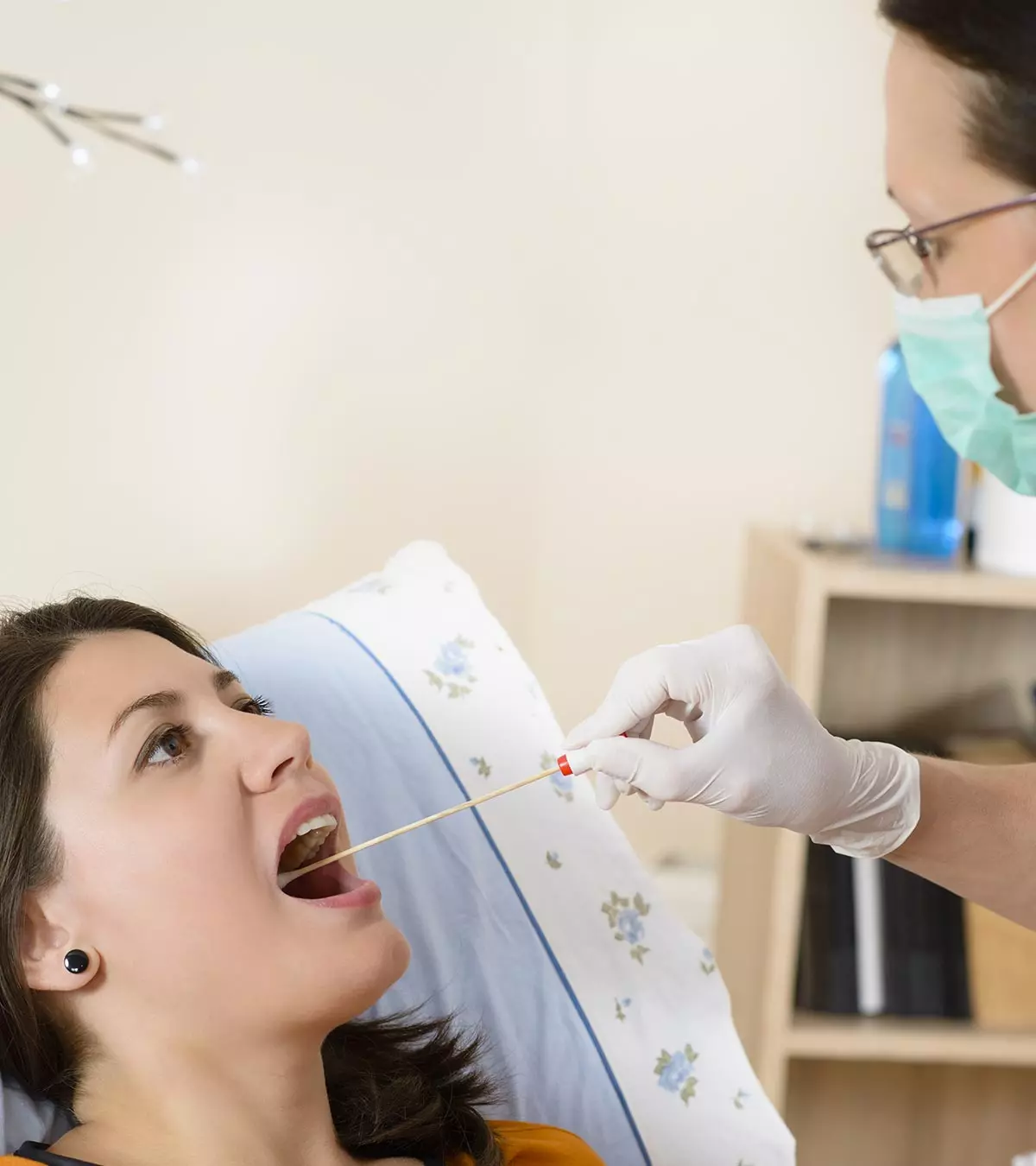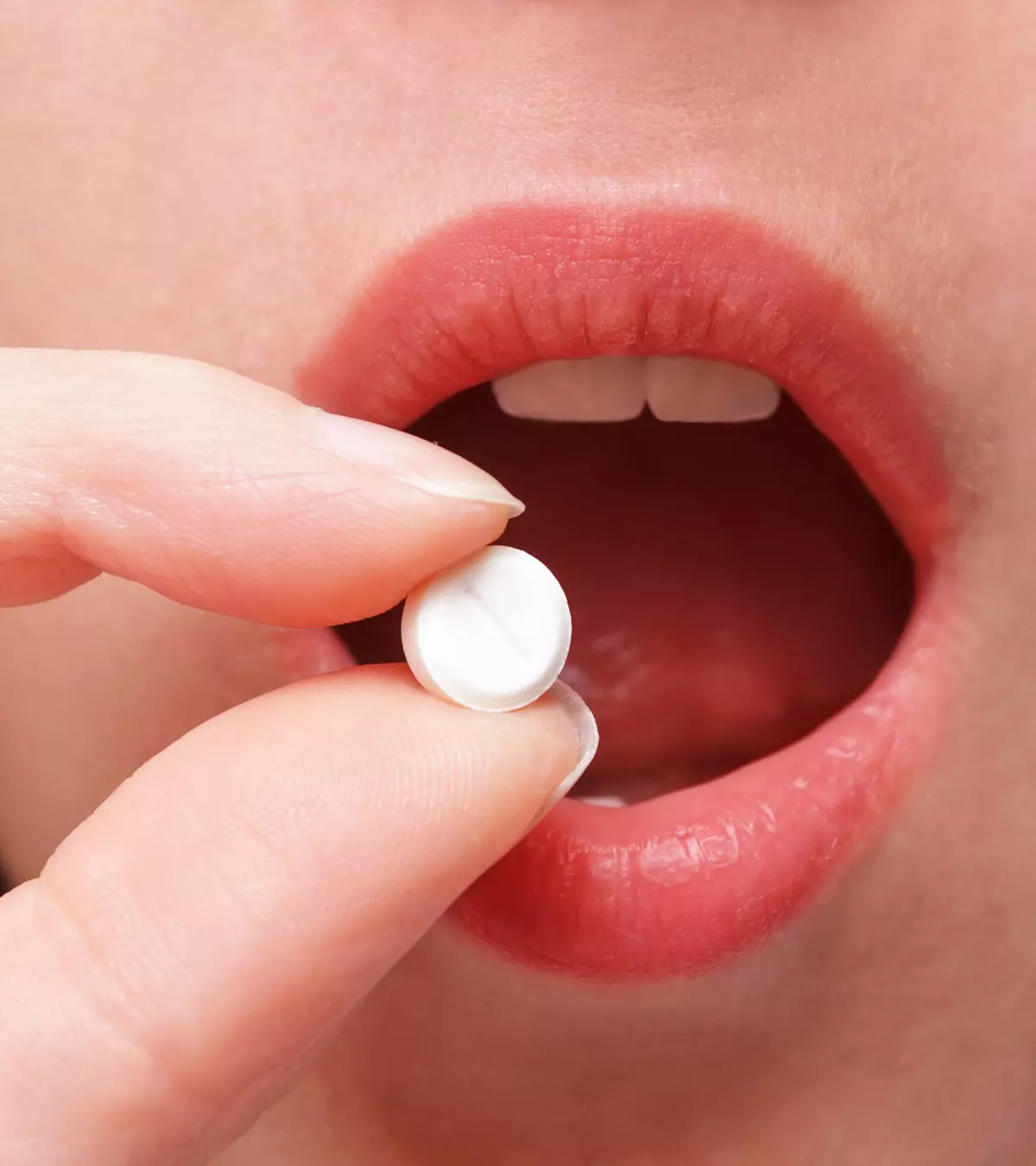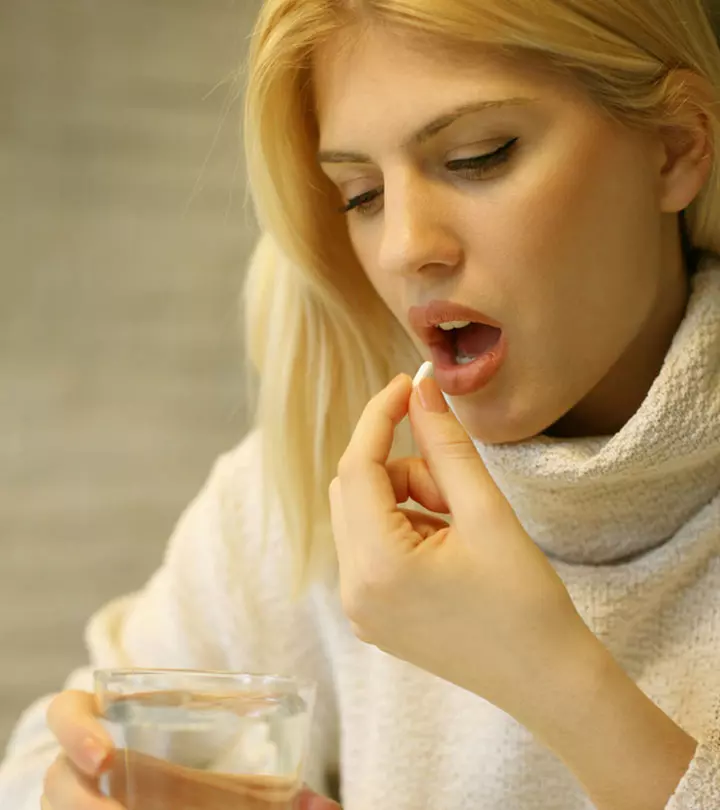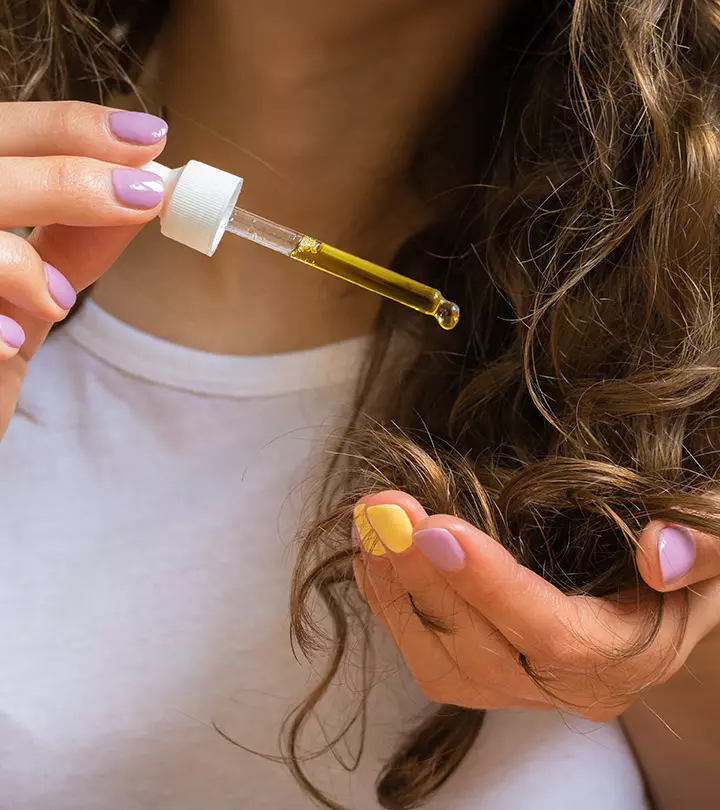
Image: Shutterstock
Nipple vasospasm is characterized by tightening or constricting of the blood vessels (vasoconstriction) surrounding the nipples. It may reduce the nipple’s blood flow, which can lead to pain and a blanched appearance (whitened) of the nipples. This may often cause it to be misdiagnosed as thrush.
Nipple vasospasm is becoming a more common condition and may often only occur during or immediately after breastfeeding. The common risk factors include using a pump flange of incorrect size or having an undiagnosed tongue tie in babies. A shallow latch of the baby may also be a trigger.
Keep reading to learn the various triggers, symptoms, management methods, and preventive measures for nipple vasospasm.
Key Pointers
- Nipple vasospasm is caused when the blood vessels around the nipple constrict, reducing the blood flow.
- Nipple pain, discoloration, and burning sensation are some symptoms of nipple vasospasm.
- Some factors that increase the risk of this condition are nipple injury, infections, medications, and autoimmune diseasesiWhen the body's immune system considers its tissues as foreign and attacks them. .
- Nipple vasospasm symptoms may be prevented or alleviated by using warm packs, showering with lukewarm water, and avoiding excess caffeine.
Signs And Symptoms Of Nipple Vasospasm
The following signs and symptoms are often seen in nipple vasospasm (1).
- Intense nipple pain is often felt as a throbbing or burning sensation due to acute ischemia or temporary lack of blood supply to the nipples. This may worsen during cold weather.

Image: Shutterstock
- Nipple blanching is white discoloration of the nipple or its tip.
- Blue, red, or purple color changes of the nipple before returning to normal color after blanching (during reperfusion).
Nipple vasospasm signs and symptoms may last a few seconds or minutes in most women, while some may experience it for a longer duration. Breastfeeding support is crucial when facing breastfeeding difficulties that can arise from nipple vasospasm, resulting in a range of pain from mild discomfort to severe interference with breastfeeding. Furthermore, mothers experiencing this condition may face challenges such as a shallow latch or increased anxiety over feeding times. Support from lactation consultants can be instrumental in overcoming these challenges and ensuring a positive breastfeeding experience.
An anonymous mom shares the experience of suffering from mastitis, nipple thrush, blebs, and nipple vasospasm during breastfeeding on her blog. She says, “Since mastitis, engorgement, cracked nipples, and thrush were not enough for one person – I also got something called vasospasm. Needle-like pain during and between feedings. I went to see yet another doctor who prescribed a new drug – fluconazole. The pain was so strong I was not able to bear anything touching my nipples, be it cloth or water (in the shower). Even silk tank tops would weigh heavy on my thrush-shredded nipples. I was topless the whole time, day or night. We banned all visitors (ⅰ).’’
Causes And Risk Factors For Nipple Vasospasm
Any condition that causes narrowing of the blood vessels or interruption of blood supply to the nipple could lead to nipple vasospasm
. The following factors may trigger or increase the risk of nipple vasospasm in some breastfeeding women (2).
- Nipple damages or injuries such as cracked nipple
- Poor or improper latch
- Nipple infections such as nipple thrush or mastitis
- Certain medications
- Cigarette smoking and nicotine use

Image: Shutterstock
- Cold weather
- Raynaud’s phenomenon
- Autoimmune diseases
- Breast surgeries
- Low body mass index (low body weight)
- Baby has a tongue tie
- Using a pump flangeiThe part of the breast pump that surrounds the nipples when it is placed on the breasts. that is too large for the nipple. This causes the areolaiThe region of dark skin around the nipple on the breast. to swell around the nipple while pumping. Very few nursing mothers can actually pump with the flange size that comes with the pump. Most need to purchase a smaller flange to make pumping more comfortable and reduce the risk of nipple vasospam.
Raynaud’s phenomenoniCondition that causes reduced blood flow to fingers, toes, ears, and lips, leading to color or temperature change and prickly sensation. may also cause vasospasm of the extremities (fingers and toes), which may not be associated with breastfeeding
. Lactating mothers may avoid or reduce exposure to the above-listed factors. Seek support from a lactation consultant to learn proper feeding techniques and nipple care.
 Quick fact
Quick factPrevention Of Nipple Vasospasm
The following tips may help to avoid nipple vasospasm or reduce nipple pain in some women (3).
- Avoid exposure to cold air and other triggering factors
- Use a warm pack to relieve pain
- Use an extra layer of clothing
- Use breast warmers
- Use wool breast pads
- Shower in lukewarm water

Image: Shutterstock
- Avoid nicotine and excess caffeine consumption
- Follow the proper breastfeeding technique to get baby in a good position with a deep latch every feeding
- Have baby assessed for tongue tie and revise the ties as needed
- Measure your nipples to find the appropriate flange size while pumping. Your flange should be approximately 2-4mm larger than the diameter of your nipple (not the areola).
If the preventive measures fail, medications and supplements are usually prescribed. You may contact your healthcare provider for a safe lactation prescription.
Treatment For Nipple Vasospasm
The following treatments may help to reduce nipple vasospasm or breastfeeding pain in some women (4).
- Acetaminophen (Tylenol) and ibuprofen (Motrin) may often be prescribed to treat lasting pain in nipple vasospasm.

Image: Shutterstock
- High doses of magnesium, calcium, and vitamin B6 may reduce nipple vasospasm in some women.
- Omega fatty acids may help to reduce nipple vasospasm in some women. Fish oil and evening primrose oil are rich sources of omega fatty acids.
- Nifedipine (Adalat) may be prescribed for two weeks. You may pay attention to the occurrence of side effects such as a drop in blood pressure, dizziness, flushing, and leg swelling while taking nifedipine.
- Putting a dry heat on the nipple immediately after pumping or feeding such as from a heating pad or wool nursing pad.
- Consider seeking professional help from a lactation consultant to evaluate breastfeeding techniques and provide tailored advice for managing nipple vasospasm.
 Quick tip
Quick tipFrequently Asked Questions
1. How much magnesium should I take for nipple vasospasm?
Taking about 300mg of magnesium twice a day is known to help relieve vasospasm in the nipples. Magnesium is usually prescribed as it helps in relaxing the blood vessels and the muscles (5). Speak to your doctor before taking any supplements, including magnesium citrate during breastfeeding.
2. Does caffeine cause vasospasm?
Caffeine may not cause vasospasm but could exacerbate existing vasospasm. Therefore, you may avoid caffeine to check if it helps subside the symptoms (6).
3. Can nipple vasospasm cause any complications for the baby?
There are no studies indicating maternal nipple vasospasm as being a cause of complications in the baby. However, if you continue to have concerns regarding your baby’s health, you may consult a doctor for guidance.
4. Can nipple vasospasm affect milk production or breastfeeding in any way?
Nipple vasospasm may affect breastfeeding as a result of pain and reduced milk flow in the nipples (6).
Severe pain in the nipple and changes in the color of the nipple are common signs of nipple vasospasm. If you have undergone nipple surgeries or are under certain medications, it might increase this condition’s risks. Including omega fatty acids in your diet and treatment with acetaminophen and ibuprofen can help relieve the symptoms. It is also advised to put a warm pack on your nipples, wear an extra layer of padding and avoid the consumption of nicotine or caffeine to aid the recovery process.
Infographic: Potential Causes Of Nipple Vasospasm
If you’re experiencing pain in your nipples and white discoloration, these could be signs of nipple vasospasm. While it might not be harmful, associated symptoms can cause discomfort. Check out the infographic below to learn about various potential causes and triggering factors behind this condition.

Illustration: Momjunction Design Team
Illustration: Nipple Vasospasm (White Nipple): Symptoms Treatment & Tips
_symptoms_treatment__tips_illustration.jpg.webp)
Image: Dall·E/MomJunction Design Team
Personal Experience: Source
MomJunction articles include first-hand experiences to provide you with better insights through real-life narratives. Here are the sources of personal accounts referenced in this article.
i. The Milky Way – Our Breastfeeding Journey (Part 2).https://irinacroitorblog.wordpress.com/2019/10/06/the-milky-way-our-breastfeeding-journey-part-2/
References
1. Nipple Vasospasm; The Royal Women’s Hospital
2. Vasospasm; Australian Breastfeeding Association
3. Nipple Vasospasm; Australian Capital Territory Health
4. Nipple Vasospasm; Canadian Breastfeeding Foundation
5. Vasospasm; Minnesota Birth Center
6. Vasospasm and breastfeeding; Pregnancy, Birth and Baby
Community Experiences
Join the conversation and become a part of our nurturing community! Share your stories, experiences, and insights to connect with fellow parents.
Read full bio of Julie Matheney
Read full bio of Dr Bisny T. Joseph
Read full bio of Rohit Garoo
Read full bio of Anindita Ghatak







